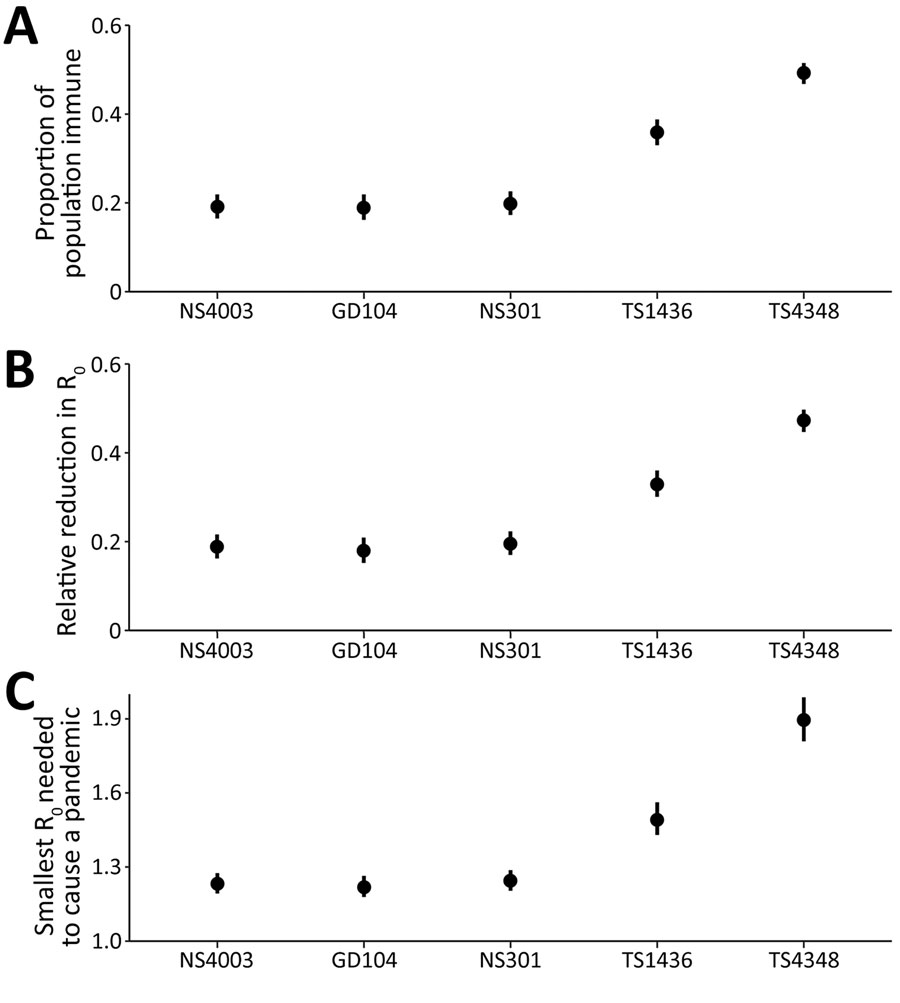Volume 28, Number 5—May 2022
Research
Determining Existing Human Population Immunity as Part of Assessing Influenza Pandemic Risk
Figure 2

Figure 2. Estimations of overall population-level immunity against H1 and H3 viruses and the potential effect of population immunity on reproduction number in study to determine existing human population immunity as part of assessing influenza pandemic risk. Error bars represent the 95% credible intervals of the estimates. Data are shown from A/Swine/Hong Kong/NS4003/2016 (EA, H1N1) (NS4003), A/Swine/Guangdong/104/2013 (EA, H1N1) (GD104), A/Swine/Hong Kong/NS301/2013 (TR, H1N2) (NS301), A/Swine/Hong Kong/1436/2016 (pdmH1N1) (TS1436), and A/Swine/Hong Kong/4348/2016 (BD-like H3N2) (TS4348).
Page created: February 24, 2022
Page updated: April 19, 2022
Page reviewed: April 19, 2022
The conclusions, findings, and opinions expressed by authors contributing to this journal do not necessarily reflect the official position of the U.S. Department of Health and Human Services, the Public Health Service, the Centers for Disease Control and Prevention, or the authors' affiliated institutions. Use of trade names is for identification only and does not imply endorsement by any of the groups named above.